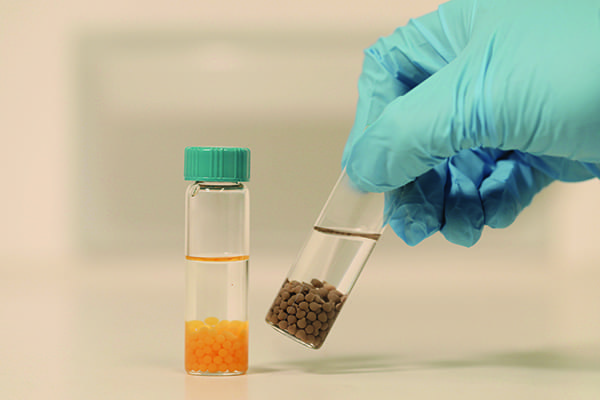Chemists from the Swiss Federal Institute of Technology Lausanne (EPFL; Switzerland; www.epfl.ch) have developed “sponges” designed to capture various target substances, such as gold, mercury and lead, dissolved in solution. Now, they have developed one for capturing toxic hexavalent chromium from water. The material — a composite bead of a metal organic framework (MOF) on a polymer — not only has a high adsorption capacity for Cr(VI), but it also acts as a photocatalyst, whereby the Cr(VI) is converted to the less toxic Cr(III).
As described in an article published last month in the Journal of Materials Chemistry A, the adsorbent sponge is made by first functionalizing a known Zr-MOF, UiO-66, with double amino groups. This modification permits the new material, Zr-BDC-(NH2)2, to serve a dual-purpose as both adsorbent and photocatalyst, according to the chemists. Next, Zr-BDC-(NH2)2 was incorporated into MOF@polymer beads using polyethersulfone (PES) that was chemically modified with carboxylic acid groups to improve hydrophilicity.
The researchers have demonstrated that the MOFs can extract approximately 208 mg of Cr(VI) per gram of MOF [photo before (left) and after (right)]. Also, shining light on the loaded MOF then transforms the highly toxic Cr(VI) into a relatively nontoxic Cr(III). Further developments are required in order to implement the technology for decontaminating water outside of the laboratory.
Hexavalent chromium continues to contaminate water sources around the world, with one U.S. company fined just this past February for having put employees at risk. Cr(VI) is considered to be extremely toxic, especially when inhaled or ingested, and its use is regulated in Europe and in many countries around the world. It is thought to be genotoxic, leading to DNA damage and the formation of cancerous tumors.

EPFL, Alain Herzog